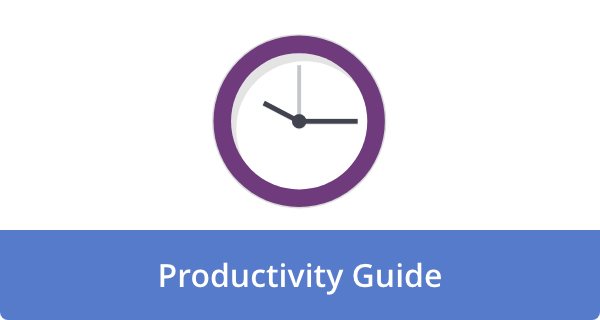

Every well-functioning workplace needs good scheduling policies. When scheduling practices are weak, they can lead to understaffed shifts, low worker morale, and declining productivity. On the other hand, a clear and efficient scheduling policy can ensure sufficient coverage during peak work hours, minimize time waste, and boost output. Although it takes time to develop a good scheduling policy, the outcome is worth the effort.
Whether you’re a team manager, human resources representative, or business owner, organizing employee schedules is critical. You can start by reviewing and updating your basic companywide scheduling policies as needed. Here are six workplace calendaring policies that pave the way for greater efficiency in the office.
1. Use Digital Scheduling Tools
If you’re still trying to keep track of employee work schedules on a physical calendar, you’re not doing yourself any favors. Using outdated, manual tools like these can waste a significant amount of time and cause considerable confusion. It’s far better to invest in quick and efficient digital scheduling tools that get the job done in a fraction of the time. Microsoft Calendar, Google Calendar, and Other Similar Tools are all examples of convenient digital scheduling tools that can make your life easier.
With digital scheduling tools, you can automatically create recurring work shifts and make adjustments within seconds. Anytime you create a schedule or adjust it, digital scheduling tools can send notifications to all impacted employees. That way, you don’t need to worry about forgetting to tell someone about a shift change or an open shift that needs filling. Digital scheduling tools can eliminate calendaring confusion and avoid unexpected workplace conflicts.
2. Create a Clear Scheduling Framework
Once you’ve set up a digital scheduling framework, ensure you’ve a strong and clear workplace scheduling policy to match. You’ll want to clearly communicate when and how employees will receive their monthly or weekly schedules. If you only work on schedules when it’s convenient for you rather than on a predictable rotation, you’ll frustrate workers. This can negatively impact efficiency and cause grumbling amongst coworkers.
To set clear expectations and keep everyone on the same page, create a policy for when you’ll draft and post work schedules. You should also work to rotate holidays, weekends, and other high-demand workdays to ensure fairness and avoid employee burnout. When you treat your team members fairly, you create a more pleasant work atmosphere and boost morale. Well-treated employees also tend to be more willing to pick up last-minute shift openings when needed.
3. Consider Employee Scheduling Preferences and Availability
Gathering employee scheduling preferences and availability information is a crucial part of any efficient scheduling policy. For example, if certain workers are only available for morning or evening-specific shifts, you’ll need to make a note of that. Ideally, workers should notify you of their availability when you hire them. However, life circumstances sometimes change, and some employees may need to tweak their scheduling availability unexpectedly. Try to be flexible when this happens and see if it’s possible to work around their new schedule.
Even the most well-laid plans can get disrupted, so it’s wise to have a contingency plan in place. For example, imagine you discover that one of your employees is actively seeking another job. In this situation, you’d be wise to double-book their shift in case they quit without giving two weeks’ notice. Or if a worker is due to have a baby within the next few weeks, prepare to cover her shift if she goes into labor early.
4. Make Seamless Shift Swaps
If employees frequently try to drop or swap shifts at the last minute, you may need to strengthen your policy regarding scheduling changes. For example, you could outline in your policy the lead time required for swapping shifts. You should also clearly define who needs to approve each shift swap to make it official. It could also be helpful to maintain a roster of employees who are willing to cover other workers’ shifts as needed. That way, workers know who to reach out to if they experience an emergency and can’t come to work as scheduled.
If you consistently deal with last-minute employee shift swaps, you may need to revise your scheduling policy to be more restrictive. For example, you could only allow each employee to make two shift swaps per month. To prevent workers from feeling stuck with a schedule they can’t reasonably maintain, encourage regular employee feedback. Ask workers to voice their scheduling concerns early on so you can determine the most reasonable way to address them.
5. Train Employees on Scheduling Policies
It’s great to have clear scheduling policies, but they won’t be of much use if your employees are unaware of them. Training workers on your company’s scheduling policies can ensure that team members understand how things work and what is expected of them. It can also provide them with greater clarity on how to request time off, handle shift swaps, and update their availability. Proper training can improve efficiency and help things run smoothly, so you spend less time dealing with scheduling conflicts and problems.
There are many different ways to train managers and teams on your company’s scheduling policies. You could have each new hire complete a brief online training that goes over your scheduling policies in detail. You may also hold an annual company-wide meeting to review any scheduling policy changes. Doing so can prevent confusion and optimize workplace efficiency.
6. Monitor Performance
Monitoring performance may not seem like it fits into a typical scheduling policy. However, keeping track of key performance indicators can help guide your scheduling practices. For example, if you notice that one employee consistently clocks in late, it could indicate a poor shift fit. They might be rushing to work after school and be unable to arrive on time for that particular shift. In that case, you may be able to improve efficiency and reduce feelings of overwhelm by scheduling that employee to come in half an hour later or for an entirely different shift.
Actively monitoring employee performance can provide valuable insights into how well or poorly your current schedule is working. If the cause of poor performance can be traced to scheduling problems, it’s in your best interest to address the issue promptly. This may involve speaking with workers one-on-one and adjusting work schedules. Being willing to change schedules as needed will help employees feel valued and seen. This, in turn, can boost employee satisfaction and encourage greater productivity and operational efficiency.
Conclusion
Your workers are the lifeblood of your company, so it’s essential to keep them happy and productive. If your goal is to improve efficiency, consider starting by reviewing and updating your scheduling policies. Poorly constructed and communicated policies can lead to overworked employees and scheduling confusion. On the other hand, clear scheduling policies can improve operational efficiency and keep your team members happy.
If you think your scheduling policy is acceptable as it stands, don’t hesitate to ask for employee feedback. You may be surprised to discover weaknesses in your policy that translate to frustration and declining morale. If employees are currently discontented with your scheduling policy, try implementing some of these changes. You’ll know your changes are working as intended if employee satisfaction improves and things start to run more efficiently around the office.
Featured Image Credit: Photo by Tima Miroshnichenko: Pexels











Howie Jones
My name is Howie and I'm a Customer Success Manager at Calendar. I like to ensure our customers get the best experience using our product. If you have questions email me howie at calendar.com